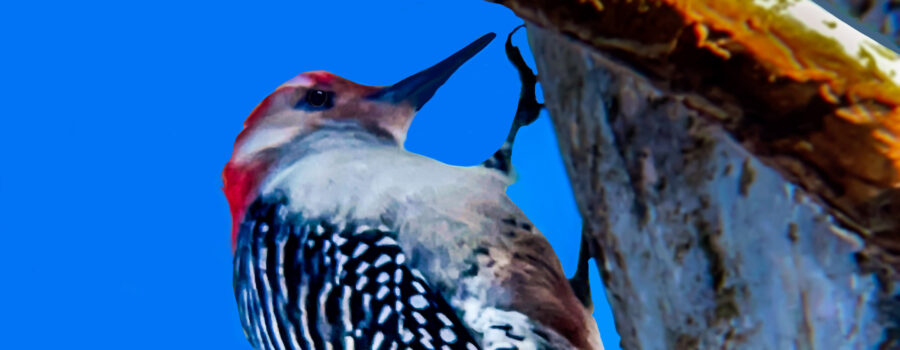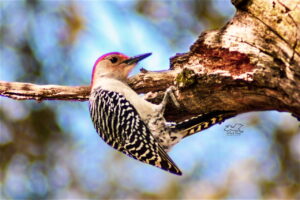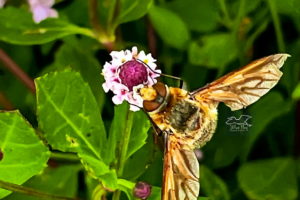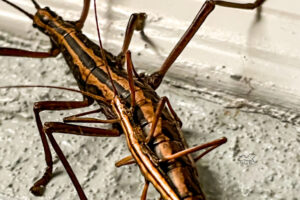The Red Bellied Woodpecker is Great at Being an Insectivore

Woodpeckers are incredibly well adapted for their insectivorous lifestyle. There are many types of woodpeckers all over the world and they have some special adaptations that allow them to drill into trees and search for insects or build nests. First of all, they have extraordinary long tongues that allow them to probe around into the small holes that they produce. In fact, their tongues are so long that when not in use, they have to be rolled up into the skull. Since they are frequently drilling into both dead and live wood, they have special ligamentous structures around the base of the bill and around the brain that absorb shock and help to protect the brain. When all that wood is flying around, woodpeckers also need eye and nose protection. They have special stiff feathers around the nares that help to filter out wood particles and keep them from entering the respiratory system. Finally, they have fully functioning, clear third eyelids or nictitating membranes, that protect and clean the eyes while still allowing the bird to see.

This particular woodpecker is a red bellied woodpecker (Melanerpes carolinus) and it so happens that it has a tongue that is over three times longer than it’s bill! Much of the time when looking at them it is hard to understand where the name red bellied comes from, since it has a beautiful red head (sorry, the name red headed woodpecker is already taken), but the red belly is hard to see. But if you look closely at the lower abdomen of this bird, you can see the reddish flush that gives this bird its common name. We have plenty of these guys out here in the oak and pine forest. Those types of deciduous trees provide both great places for nesting and lots of access to insects. This one was foraging in a long dead old pine tree. I frequently see woodpeckers there since I’m sure the tree is full of insects working to recycle all that wood back into the environment.





Recent Comments